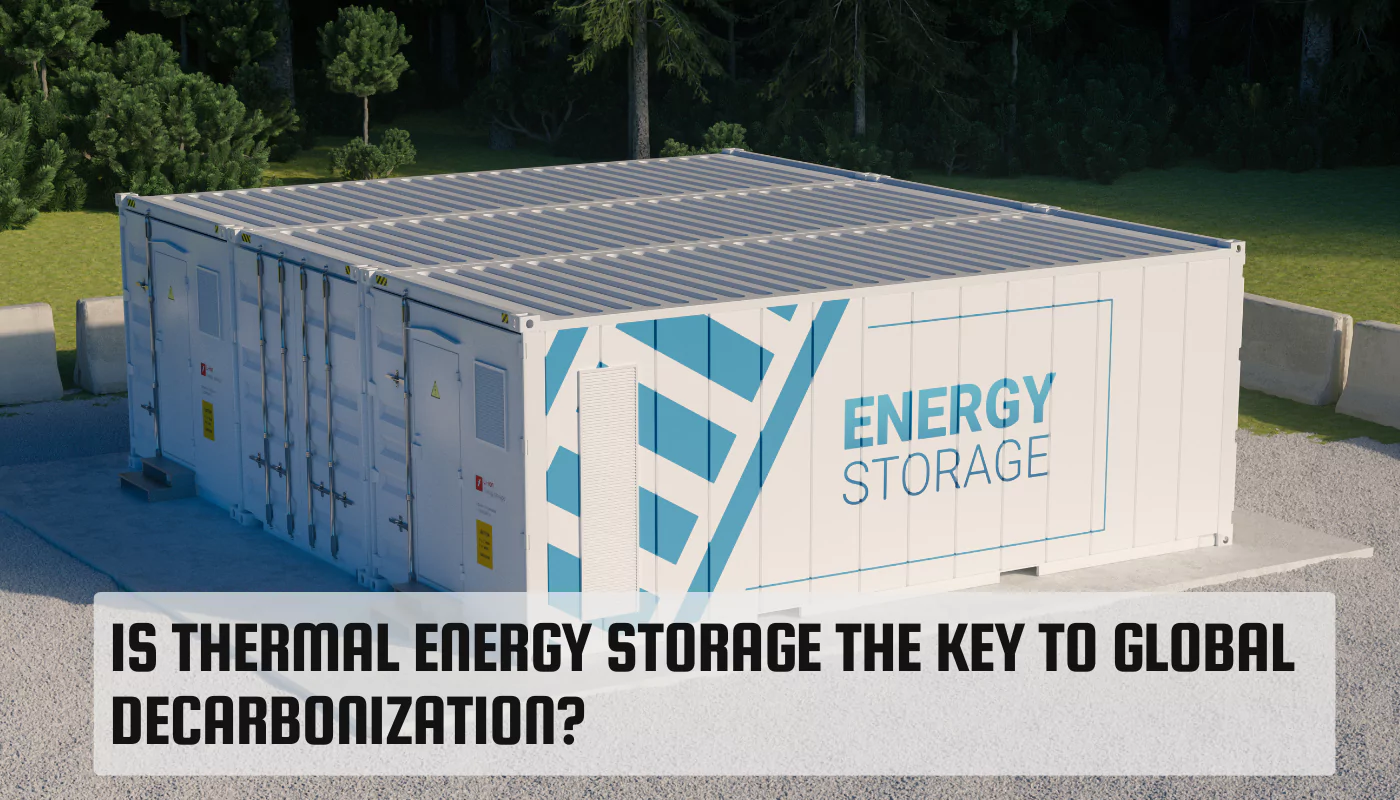Is Thermal Energy Storage the Key to Global Decarbonization?

Yes, thermal energy storage (TES) holds significant promise for global decarbonization. It offers a way to bridge the gap between renewable energy generation and energy demand, addressing a key challenge in shifting away from fossil fuels.
Understanding Thermal Energy Storage
Thermal energy storage involves storing energy in the form of heat or cold. Think of it like a giant thermos bottle, but instead of keeping your coffee warm, it keeps large amounts of energy stored for later use. There are different ways to store thermal energy:
- Sensible Heat Storage: This method uses materials like water, rocks, or molten salt to store heat. These materials change temperature when they absorb or release heat. It’s like heating a brick – it gets hot and stores that heat.
- Latent Heat Storage: This method uses materials that change phase, like ice melting into water. When ice melts, it absorbs a lot of heat without changing temperature much. This heat is stored as latent heat. This method is more efficient than sensible heat storage.
- Thermochemical Storage: This method uses chemical reactions to store and release heat. It is like mixing two chemicals that create heat when combined. This method is still under development.
Why is Thermal Energy Storage Important?
Renewable energy sources like solar and wind power are intermittent. The sun doesn’t always shine, and the wind doesn’t always blow. This means we can’t always rely on them to meet our energy needs. TES can solve this problem. It allows us to store excess energy generated during times of high renewable energy production and use it later when needed. Imagine a sunny day. Solar panels produce lots of electricity. Some of that electricity can be used to heat a material like molten salt. This hot salt stores the energy. At night, when the sun isn’t shining, the hot salt can be used to generate electricity.
Benefits of Thermal Energy Storage
Thermal energy storage offers many benefits:
- Integration of Renewables: TES helps integrate intermittent renewable energy sources into the grid. It makes renewable energy more reliable.
- Grid Stability: TES can help stabilize the electricity grid. It can quickly respond to changes in energy demand and supply.
- Reduced Reliance on Fossil Fuels: By making renewable energy more reliable, TES helps reduce our reliance on fossil fuels. This is key to decarbonization.
- Lower Greenhouse Gas Emissions: Reducing fossil fuel use lowers greenhouse gas emissions, which contribute to climate change.
- Cost Savings: In some cases, TES can reduce energy costs by allowing consumers to use cheaper electricity during off-peak hours.
Applications of Thermal Energy Storage
Thermal energy storage has many applications:
- Power Generation: TES can be used in concentrated solar power plants to generate electricity even when the sun isn’t shining.
- Heating and Cooling: TES can be used to store heat for space heating in winter and cold for air conditioning in summer. This can improve energy efficiency in buildings.
- Industrial Processes: Many industrial processes require heat. TES can be used to provide this heat, reducing the need for fossil fuels.
- District Heating and Cooling: TES can be used in district heating and cooling systems to provide heating and cooling to multiple buildings.
Challenges of Thermal Energy Storage
Despite its potential, thermal energy storage faces some challenges:
- Cost: TES systems can be expensive to build. Research and development are needed to reduce costs.
- Efficiency: Some energy is lost when storing and releasing thermal energy. Improving the efficiency of TES systems is important.
- Material Selection: Finding suitable materials for TES systems is a challenge. Materials need to be able to store large amounts of energy and withstand high temperatures.
- Space Requirements: Some TES systems require a lot of space. This can be a problem in urban areas.
The Future of Thermal Energy Storage
The future of thermal energy storage looks bright. Research and development are addressing the challenges mentioned above. Costs are decreasing, and efficiency is improving. Many countries are investing in TES projects. As renewable energy becomes more prevalent, the need for TES will only grow.
Thermal Energy Storage and Decarbonization
Thermal energy storage is a crucial technology for global decarbonization. It provides a way to overcome the intermittency of renewable energy sources and make them a reliable part of our energy system. By reducing our reliance on fossil fuels, TES can play a significant role in mitigating climate change. Continued research, development, and deployment of TES technologies are essential for a sustainable energy future. It is not the only key, but a very important one. We will need many solutions to achieve decarbonization. Thermal energy storage is a powerful tool in our toolbox.









